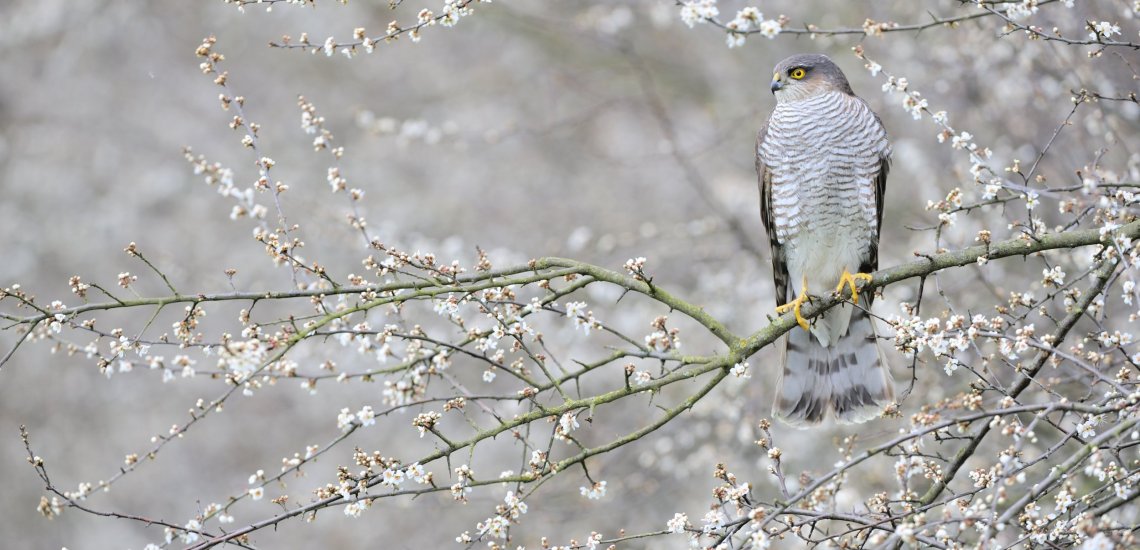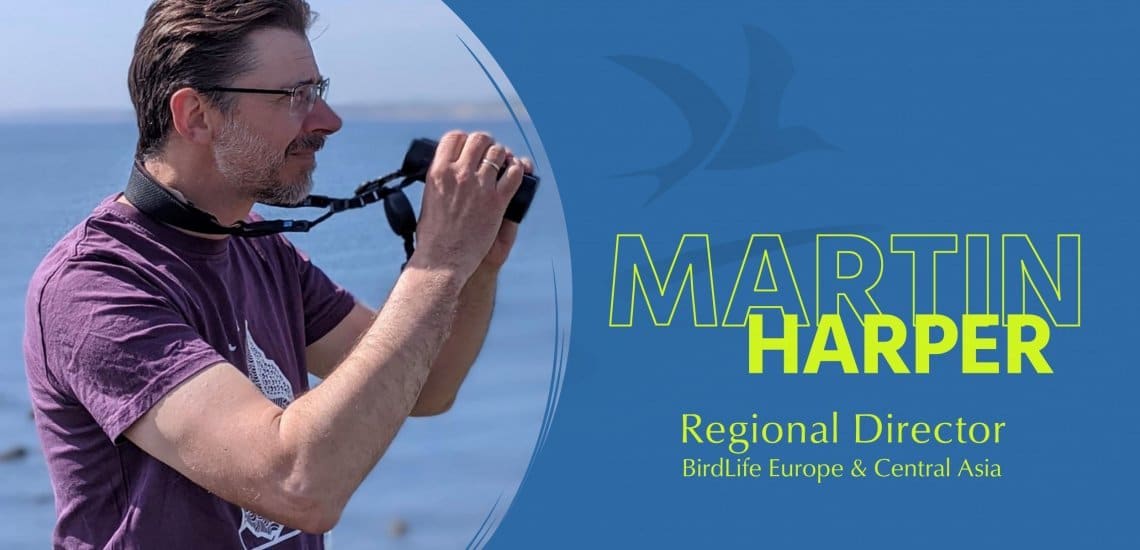Challenge 2030: how business can support the UN Decade of Ecosystem Restoration

Close to where I live in Cambridgeshire, in the East of England, is one of my favourite nature reserves – Ouse Fen. It is a classic reedbed with bitterns booming and marsh harrier gliding gracefully overhead.
As a working sand and gravel quarry, it seems to change every time I visit – and that is part of the attraction. The site is the result of a decade-long partnership between Hanson (a subsidiary company of HeidelbergCement) and the RSPB (the UK’s BirdLife Partner). When complete, the reserve will be the UK’s biggest reedbed, covering 460 hectares and recreating some of the lost wetland habitats that once dominated the entire English Fenland landscape.
Ouse Fen is just one example of how nature can benefit after minerals have been extracted from a site. This week, BirdLife International celebrated its tenth anniversary of working with HeidelbergCement, demonstrating the impact of what can be achieved when companies and NGOs join forces.
At first glance, this may not seem a straightforward relationship as clearly the extractive sector can have big impacts on the environment, and the cement industry itself is one of the biggest emitters of greenhouse gas emissions. Yet, we would not have entered the partnership if we didn’t think that the HeidelbergCement was prepared to change. In fact, the very first thing we did with the company was a proximity study mapping their extractive sites against Important Bird Areas and other protected areas to help them avoid damaging nature.
Since then, (as highlighted in our tenth-anniversary report) we have together helped enhance or restore more than 6500 hectares of habitat and manage 110km of riparian shoreline habitat. The partnership has supported 40 conservation projects in 19 countries ranging from Ghana to Israel and Georgia to the Czech Republic. What’s more, we have shared our experience through the development of new codes of practice about managing temporary habitat and HeidelbergCement has supported our advocacy efforts both to defend the EU Nature Directives but also (as demonstrated in the new statement we issued this week) to secure an ambitious new Nature Restoration Law in the European Union – advocating 15% of land to be restored by 2030.
And this, to my mind, is a test of whether a company is playing its part in addressing the nature and climate emergency. Getting your house in order by improving the environmental performance of your business is part of the challenge but advocating change both within your sector and beyond should also be conditions for being a “responsible” company.
However, the reality is that many big companies continue to lobby against the environment and can seriously undermine efforts to tackle the planetary crisis. There are exceptions, as we saw when Cembureau – the representative organisation of the cement industry in Europe – took a very progressive stance in advocating for high environmental standards when the EU Nature Directives were at risk. But some big companies in Europe are still letting their representative bodies consistently speak on their behalf against environmental policies, regulation, and enforcement.
Throughout my career, I have worked with a wide variety of businesses, and I know both the major benefits and the serious reputational risks associated with such partnerships. Some of these partnerships can be very transactional where the needs of the NGO and company align, while others can be much deeper, where there is hope and then a plan for more serious and systematic business behavioural change. This can take time and, in my experience, requires sustained commitment and leadership from the top of both organisations – without it, the NGO can be frustrated or even feel as though they have been taken for a ride. Get it wrong and the reputational hit can be serious because you can suffer claims of greenwashing. But, the benefits of getting it right can be huge: more biodiversity, potentially more funding for the NGO, and also new knowledge from working with people with very different skills and experiences. The latter has certainly been the experience of BirdLife’s work with HeidelbergCement.
The hard truth is that we need more corporates to play their part in reversing biodiversity declines. We shall not achieve new ambitious global biodiversity targets without them. Many have now embraced the climate change challenge by setting long-term targets and working out how to decarbonise their business operations in line with government targets. Clearly, progress is not as fast as we would like, or the planet needs, but monitoring and reporting emissions against targets does encourage scrutiny and healthy challenge which can only be good. HeidelbergCement, for example, aims to reduce specific net CO2 emissions by 30% compared to 1990 by 2025.
We need a similarly systematic approach to nature. I like the guidance provided by Business for Nature who outline the steps that companies can take to become nature positive: assess your current impacts; commit to ambitious science-based targets to drive performance; act to avoid harm and improve nature; advocate change in government policy/regulation to make it easier for everyone to protect and restore nature. The targets should, ideally, align with those commitments emerging from the post-2020 global biodiversity framework.
It is perhaps easier for those businesses with an estate to make tangible improvements for nature as they have land that they can audit and manage. But any company with a supply chain must also take steps to ensure that their actions conform to their native positive vision. It is why we encourage businesses to use the Integrated Biodiversity Assessment Tool to understand how business or investment decisions might affect biodiversity by making data available from the three most important global databases: IUCN Red List of Threatened Species, World Database on Protected Areas and World Database of Key Biodiversity Areas.
Companies are getting used to accounting for and reporting both direct and indirect greenhouse gas emissions. They must do the same biodiversity. It is clear that the impact of European and Central Asian economies on nature are not restricted to our own geography and create large overseas ecological footprints. For example, the EU is responsible for 7-10 % of global consumption of crops and livestock products that are associated with deforestation in their countries of origin. Greenpeace has calculated that in 20 years, EU consumption of key commodities (livestock and leather, cocoa and coffee, palm oil, rubber, soybeans, nuts, and wood products) was responsible for >8 million hectares of deforestation. A similar study conducted by the RSPB and WWF reached similar conclusions. It is why we have welcomed proposals for new EU and Westminster legislation for mandatory due diligence for forest and ecosystem-risk commodities being placed on the market.
And finally, it is important that there is transparency to both private investors and consumers about the impact of different commercial activities. Only then can investors and consumers make informed choices. We are currently working hard to ensure new EU new green finance rules do not categorise environmentally harmful activities, such as all forestry and bioenergy investments, as being good for nature.
While Governments and, of course, civil society, have their roles to play in tackling the nature and climate emergency, we need active and constructive participation from the corporate sector. BirdLife remains prepared to work with those businesses that want to play their part to the full and genuinely become nature positive.
This blog is part of a series I am writing. You can read my previous blog here. Do you have any thoughts on what I have written? It would be great to hear your views. Send me a tweet – my handle is @MartinBirdLife.
More from Martin’s blog
Stay up to date
Sign up to receive the latest bird conservation news. You’ll also receive updates about our projects, science and other ways to get involved including fundraising.
Thank you for your support, we are committed to protecting your personal information and privacy. For more information on how we use your data, please see our Privacy Policy. You can unsubscribe from emails at any time by using the link in the footer of any email from us.



